See the archaeological findings in 2023
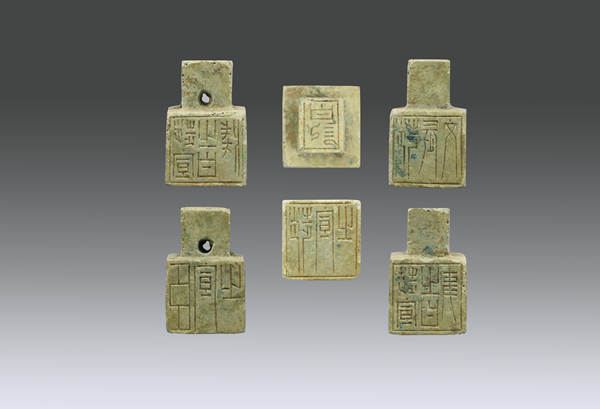
Relics discovered in a tomb from the Six Dynasties period (222-589) on Huanshan Road in Zhenjiang (Photo provided to Xinhua Daily)
In 2023, Jiangsu achieved a series of archaeological breakthroughs, covering a diverse range of periods and types of relics, as announced during a meeting of the Jiangsu Provincial Archaeological Society on March 29.
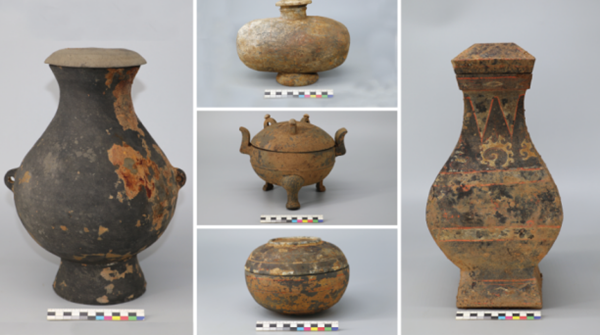
Artifacts unearthed from the Tuolan Mountain ruins
At the Tuolan Mountain ruins in Xuzhou City, archaeologists uncovered some tombs that belonged to the concubines of a Chu king during the Western Han period (206 BC-AD 24). Analysis of burial objects and human bones from the 15 tombs revealed that some owners were female. The artefacts discovered, including pottery, bronze and jade, shed light on the life within the palace.
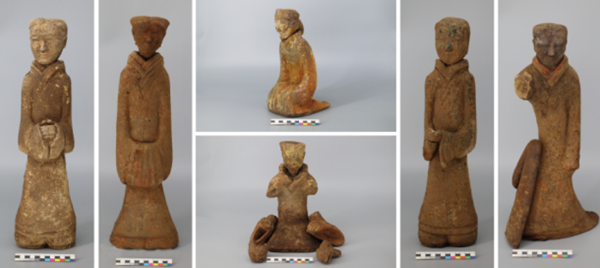
Artifacts unearthed from the Tuolan Mountain ruins
Liu Zhaojian, director of the Xuzhou Institute of Cultural Relics Protection and Archaeology, said the ruins feature a mausoleum of a Chu king and his wife. It stands out for its delicate construction, complete architecture and functions among all Chu king mausoleums found in Xuzhou to date. However, the king’s identity remains undetermined.
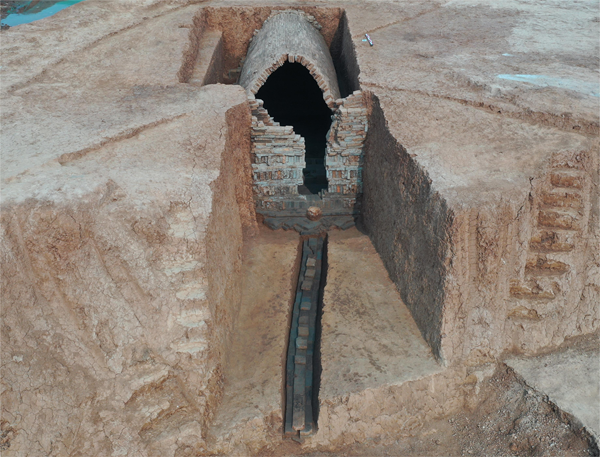
A tomb from the Six Dynasties period on Huanshan Road in Zhenjiang
The year’s findings also brought insights into the Yiyang ancient waterway, an integral part of the Grand Canal culture and a vital salt transport channel. The Lanchao (Tide Blocking) Sluice Gate, one of the waterway’s four gates, played a crucial role in shipping service to and from the Yangtze River.
Hu Qiao, an official of the Culture, Sports, Radio, Television and Tourism Bureau of Yizheng City, mentioned that the archaeological excavations provide first-hand information for studying the canal system’s structure, shipping services, and evolutions during the Ming and Qing dynasties (1368-1911).
Yancheng City and Nanjing University’s Department of Archaeology and Cultural Relics formed a joint task force to systematically survey salt sites from various periods across phases and regions since late 2021.
A total of 26 archaeological sites spanning the Tang through Qing dynasties (618-1911) were discovered within a 3-kilometre radius centred on the ancient town of Wuyou during the 2023 survey, according to Su Nan, from the Institute of Cultural Relics Protection and Archaeology in Yancheng.
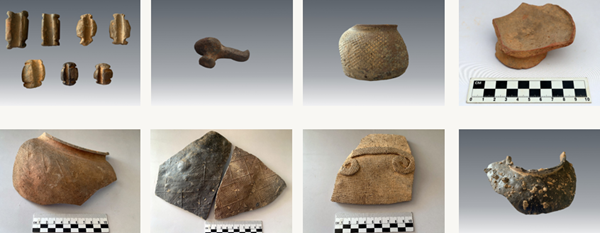
Pottery unearthed from a kiln site of the Zhou Dynasty (c. 11th century-256 BC) in Liyang
In addition, remains of handicraft workshops were also found in Jiangsu in 2023. These sites are significant for studying the history of the economy, technology and politics, contributing to the research on the origin and evolution of Chinese civilization.
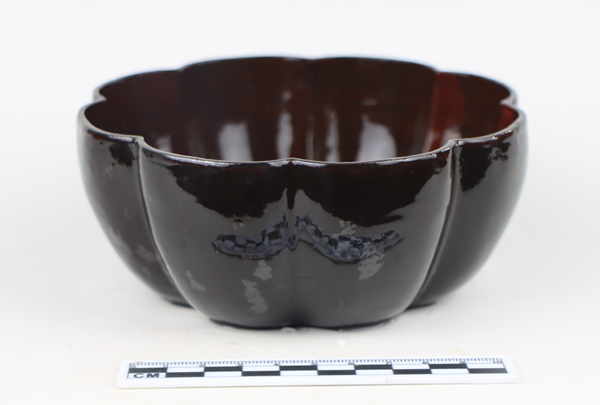
Lacquerware unearthed at the Nanzhang ruins in Suzhou
Archaeological excavations at the Nanzhang ruins in Suzhou unveiled lacquerware in a good state of preservation, with many pieces inscribed. These discoveries facilitate research into the manufacturing, distribution and cultural implications of lacquerware in Suzhou and nearby areas.